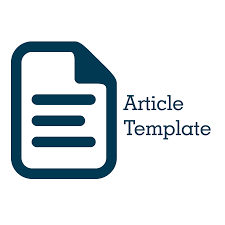Effect of media-assisted recitation method question cards on writing skills 5th grade elementary school
Abstract
This study aims to assess the effect of the question-card-assisted recitation method on the non-fiction text writing skills of fifth grade students. It is a quasi-experimental research with a nonequivalent control group design. The population of the study included all fifth-grade elementary schools in Cluster VII, Pallangga District, Gowa, South Sulawesi, which consisted of 4 schools. Two schools in the cluster were selected by purposive sampling. They were Parangabanoa Elementary School, consisting of 21 students, and Cambaya Elementary School, with 20 students. The first was assigned as the experimental class and the latter as the control class. A writing test was used to measure students' non-fiction writing skills. Descriptive analysis results showed that students' non-fiction text writing skills generally fell into a very poor category (80%) before the implementation of the method and moved to a very good category (90%) after the treatment. The hypothesis testing result was of sig 0.039 < 0.05, indicating that there was an effect of question card-assisted recitation method on the non-fiction writing skills of the fifth grade students in this study.
Keywords
Full Text:
PDFReferences
Barus, DP (2016). The Relationship between Critical Thinking Ability and News Text Writing Ability in Class IX Students of SMP Negeri 6 Percut Sei Tuan 2015/2016 Academic Year (Doctoral Dissertation, UNIMED).
Coombs, D. (2013). Fiction and Nonfiction:A Symbiotic Relationship. The Alan Reviews. 41(1), Fall 2013.
Djamarah, SB (2010). Teaching and Learning Strategy. Jakarta: Rineka Cipta
gay, LR,Mills, GE, Airasian, PW (2012) Educational Research: Competencies for Analysis and Applications, Tenth Edition. New Jersey: Merrill-Pearson Education.
Graham, S., Bollinger, A., Booth Olson, C., D'Aoust, C., MacArthur, C., McCutchen, D., & Olinghouse, N. (2012). Teaching Elementary School Students To Be Effective Writers: A Practice Guide (NCEE 2012-4058). Washington, DC: National Center for Education Evaluation and Regional Assistance, Institute of Education Sciences, US Department of Education. Retrieved fromhttp://ies.ed.gov/ncee/wwc/publications_reviews.aspx#pubsearch.
Halik, A., & Yusfira, Y. (2019). Application of the Recitation Method in Improving Student Learning Achievement in Islamic Religious Education Subjects at SMA Negeri 1 Wajo. Istiqra', 7(1).
Hardini, Puspitassari. (2012) Integrated Learning Strategy. Yogyakarta: Family.
Huda, M. (2018). Blended Learning: Improvisation in Writing Experience. 8(2), 117–130.
Kaniati, M., Hidayat, S., & Kosasih, E. (2018). The Level of Students' Critical Thinking Ability in Solving Non-Fiction Text Problems. PEDADIDAKTIKA: Scientific Journal of Elementary School Teacher Education, 5(3), 100-111.
Mahmud, H. (2019). Efforts to Improve Writing Skills Using the RCG (Picture Story Design) Technique for Grade VI Students at SDN Rengkak, Kopang District, Regency. Central Lombok Academic Year 2017/2018. JISIP (Journal of Social Sciences and Education), 1(2).
Nurmaisyah, A., & Hamdu, G. (2021). Analysis of the Ability of Fifth Grade Elementary School Students in Finding Paragraph Elements in Nonfiction Texts. PEDADIDAKTIKA: Scientific Journal of Elementary School Teacher Education, 8(4), 886-894.
Pinatih, PAM, Suandi, IN, & Yasa, IN (2014). The Application of Savi Learning Model Through the Use of Direct Objects and Word Cards to Improve Writing Paragraph Description Skills for Class XI IPB 1 Students at SMAN 1 Sawan. Journal of Indonesian Language and Literature Education Undiksha, 2(1).
Saepudin, S. (2018). Linguistic Theory and Psychology in Language Learning. Al-Ishlah: Journal of Islamic Education, 16(1), 100-118.
Sofia, CR (2014). The use of the recitation method with leaflet teaching materials to improve the writing skills of third grade students at SD Negeri 1 Grenggeng for the 2013/2014 academic year. (Thesis). Faculty of Teacher Training and Education. sebelas Maret University
Sugiyono. (2017). Educational Research Methods: Quantitative, Qualitative and R&D Approaches. Bandung: Alphabet
Sulfasyah, S., Haig. Y., & Barratt-Pugh, C. (2015). Indonesian Teachers' Implementation of New Curriculum Initiatives in Relation To Teaching Writing in Lower Primary School. International Journal of Education, 7(4), 53-72.
-------------. (2016). The Role of Instruction Method on Children's Early Writing Development and Knowledge of Genre. Journal of Educational Sciences, 12(3).
-------------., Bahri, A., & Saleh, SF (2018). Writing Lessons In Grade 1 Indonesian Thematic Textbooks: A Content Analysis. Indonesian Journal of Applied Linguistics, 7(3), 495-503.
Tompkins GE, Campbell R, Green D. (2012). Literacy for The 21st Century: A balanced approach. French Forest, NSW: Pearson Australia
Winasti, MY (2016). Improving Poetry Writing Skills in Indonesian Language Subjects Through Learning Journals Strategy with Recitation Methods in Class V Semester II SDN 02 Pendem Batu. (Doctoral dissertation). Malang Muhammadiyah University
DOI: https://doi.org/10.17509/ijpe.v6i2.44948
Refbacks
- There are currently no refbacks.
Copyright (c) 2022 Indonesian Journal of Primary Education

This work is licensed under a Creative Commons Attribution-ShareAlike 4.0 International License.
This Journal is licensed under a Creative Commons Attribution-ShareAlike 4.0 International License.
©Indonesian Journal of Primary Education. ISSN: 2597-4866 (Online) dan 2599-2821 (Print).
Jalan Dadaha Nomor 18 Kota Tasikmalaya
Telepon (0265) 331860
Homepage http://pgsd-tasikmalaya.upi.edu/
Email pgsd_tasik@upi.edu




